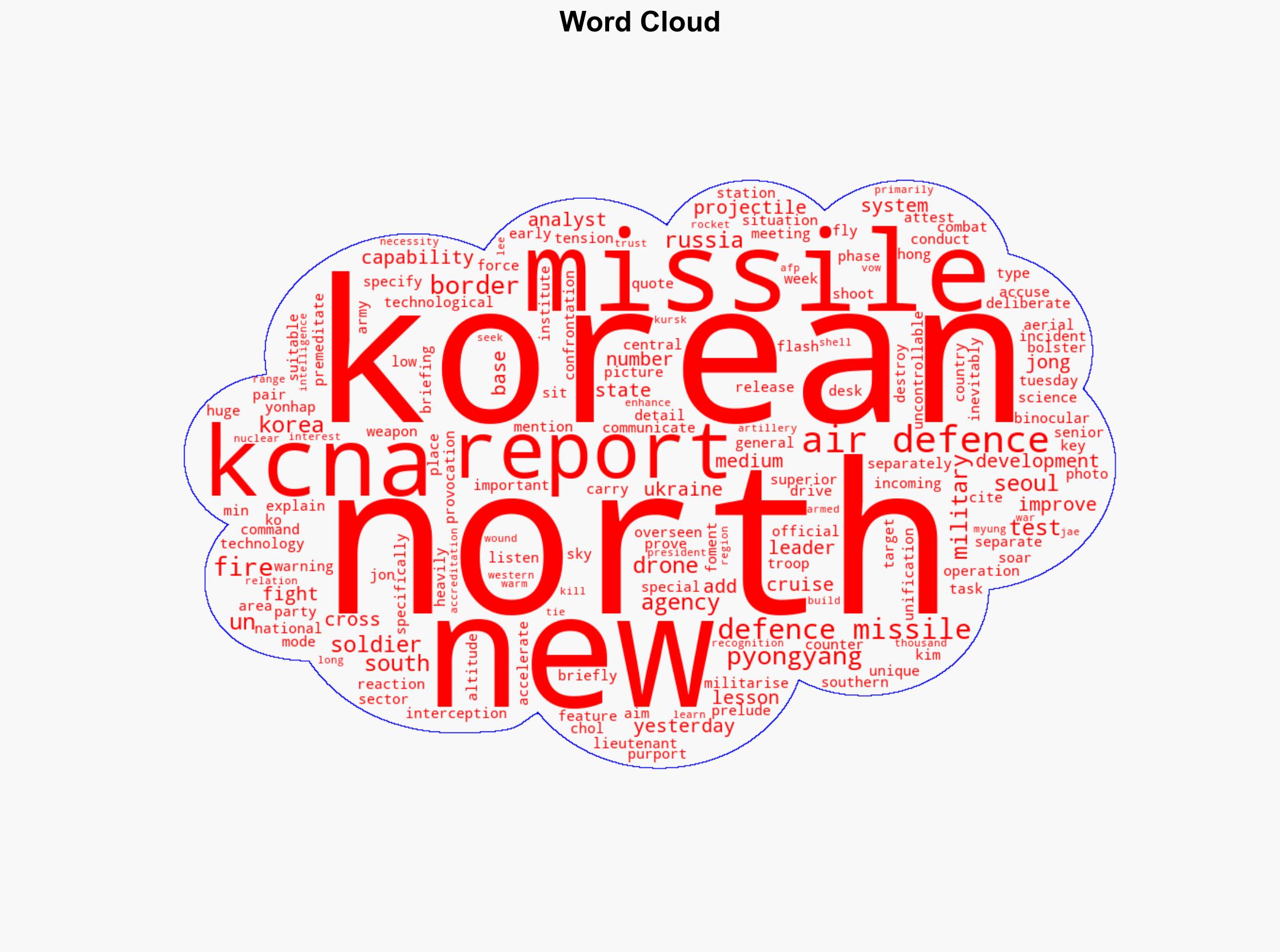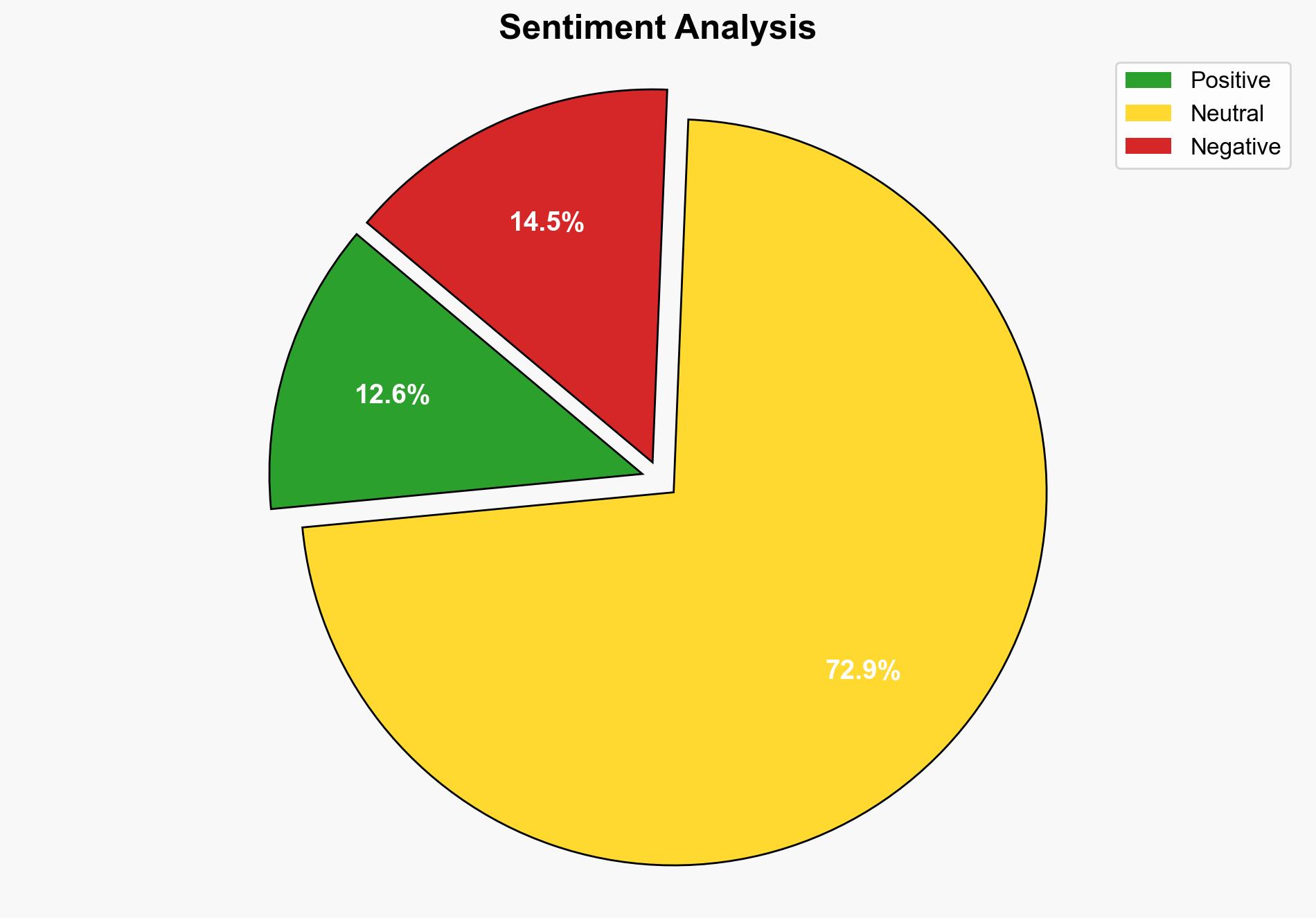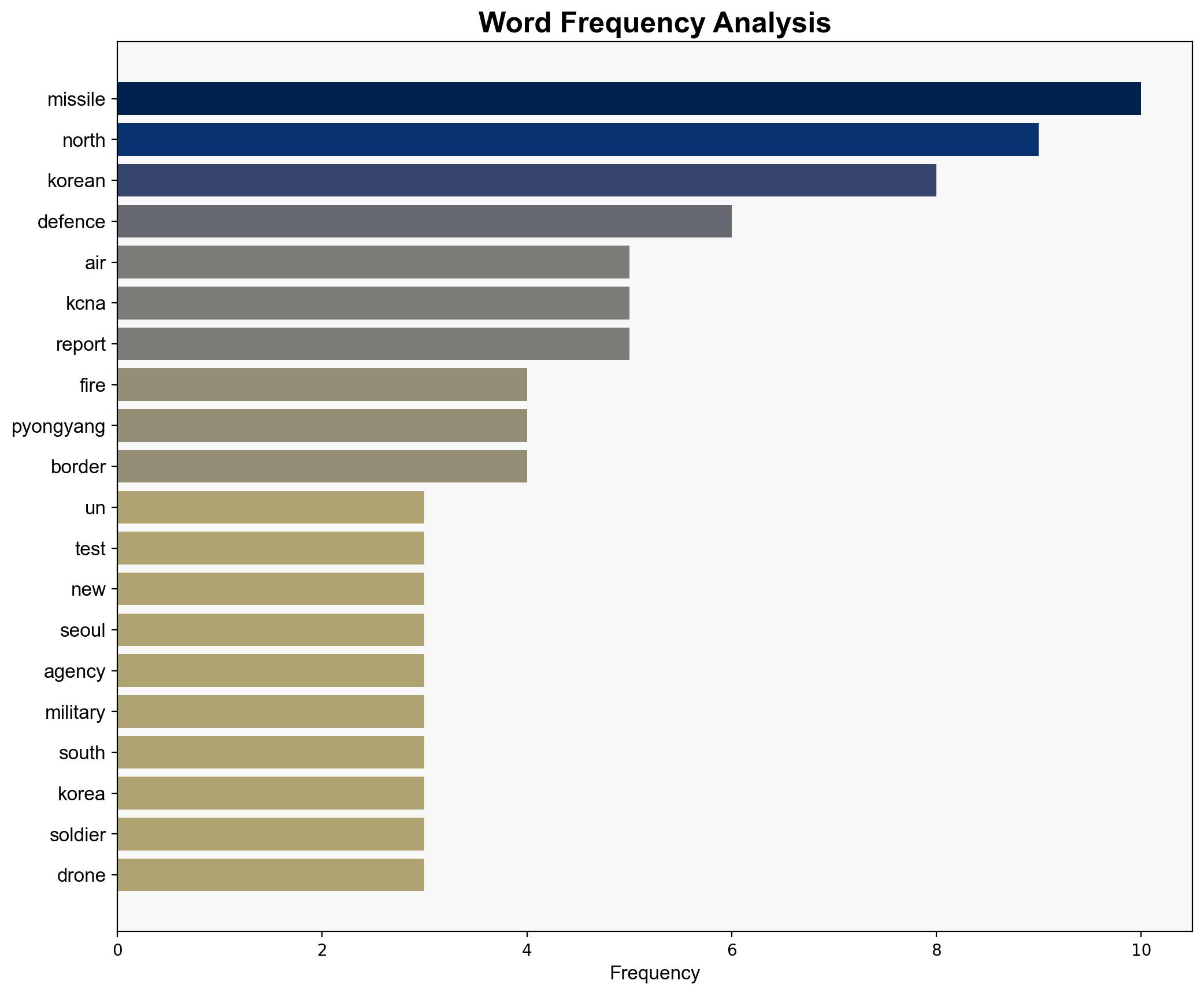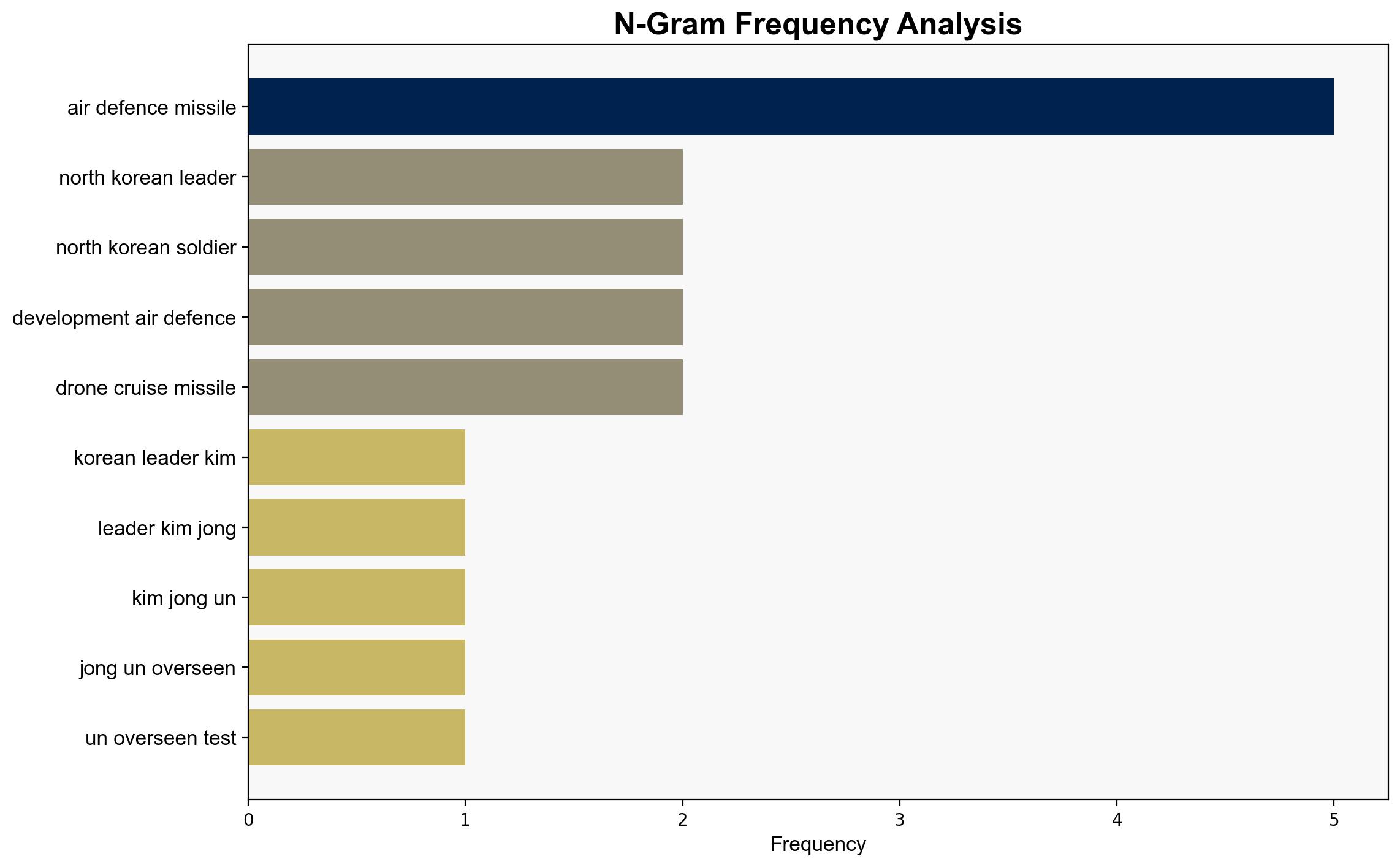North Korea test-fires two new air defence missiles – RTE
Published on: 2025-08-24
Intelligence Report: North Korea test-fires two new air defence missiles – RTE
1. BLUF (Bottom Line Up Front)
The most supported hypothesis is that North Korea’s missile tests are primarily aimed at enhancing its air defense capabilities in response to perceived regional threats, particularly from South Korea and the influence of military developments in Ukraine. Confidence level: Moderate. Recommended action: Increase surveillance and intelligence-sharing with regional allies to monitor North Korea’s military advancements and potential provocations.
2. Competing Hypotheses
Hypothesis 1: North Korea is enhancing its air defense systems primarily to counter perceived threats from South Korea and to strengthen its military posture in the region. This is supported by the context of recent border tensions and the strategic need to deter South Korean military actions.
Hypothesis 2: The missile tests are a demonstration of technological advancement aimed at bolstering internal propaganda and showcasing military strength to both domestic and international audiences. This aligns with North Korea’s historical pattern of using military tests for political leverage and internal consolidation.
Using the Analysis of Competing Hypotheses (ACH) 2.0, Hypothesis 1 is better supported due to the specific mention of South Korea’s military actions and the strategic context provided by the KCNA reports.
3. Key Assumptions and Red Flags
Assumptions include the belief that North Korea’s actions are primarily defensive rather than offensive. A red flag is the potential exaggeration or misrepresentation of missile capabilities by North Korean state media. There is also a blind spot regarding the actual technological advancements achieved, as independent verification is lacking.
4. Implications and Strategic Risks
The enhancement of North Korea’s air defense capabilities could lead to an arms race in the region, escalating tensions with South Korea and potentially involving other regional powers. There is a risk of miscalculation or accidental conflict, particularly given the recent border incidents. The geopolitical landscape could shift, affecting alliances and regional stability.
5. Recommendations and Outlook
- Enhance regional intelligence cooperation to monitor North Korea’s military activities closely.
- Engage in diplomatic efforts to de-escalate tensions and promote dialogue between North and South Korea.
- Scenario-based projections:
- Best Case: Diplomatic engagement leads to a reduction in military activities and improved inter-Korean relations.
- Worst Case: Increased military provocations result in a regional conflict.
- Most Likely: Continued missile tests and military posturing without significant escalation.
6. Key Individuals and Entities
Kim Jong Un, Ko Jong Chol, Hong Min
7. Thematic Tags
national security threats, regional focus, military escalation, inter-Korean relations




